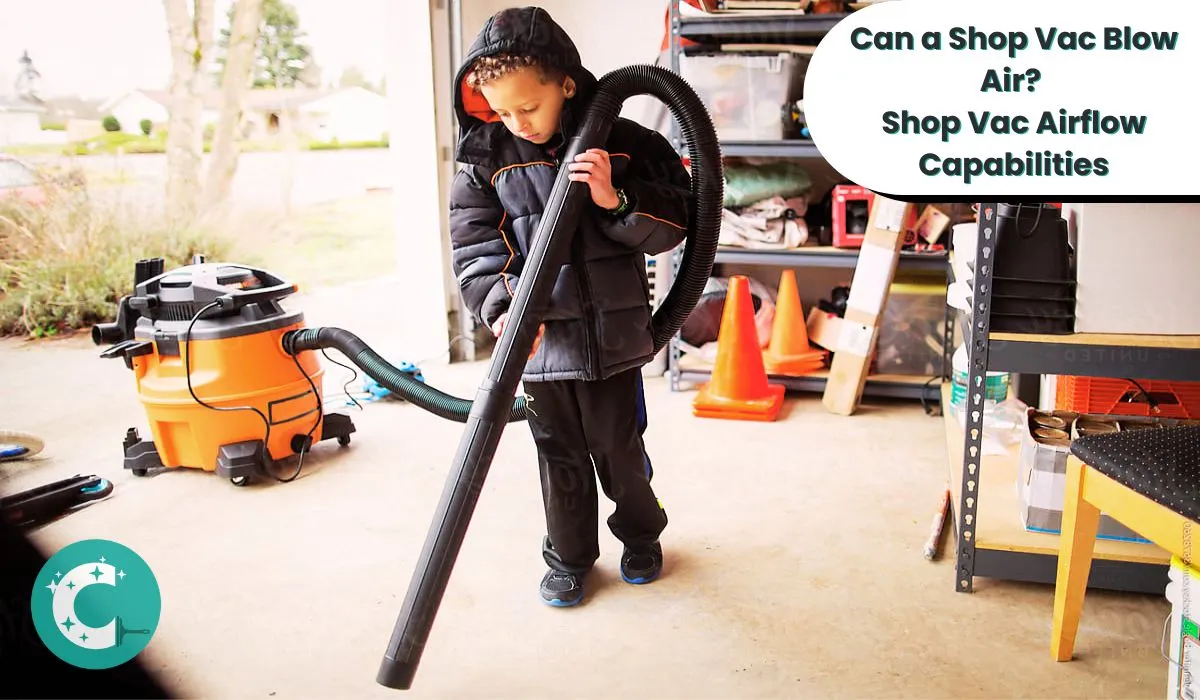Can a Shop Vac Blow Air? – Versatile Airflow Options
Yes, a shop vac can blow air in addition to its vacuuming function. It can be used to blow dust and debris away from surfaces or even inflate items like inflatable mattresses and pool toys.
A shop vac is a versatile tool known for its powerful suction capabilities. It is not limited to vacuuming alone. As it can also blow air effectively.
This dual functionality comes in handy for various tasks. Whether it’s clearing away sawdust from a woodworking project.
This article explores the dual functionality of shop vacs, how to use them effectively, and how to keep your indoors clean and safe.
How to Make a Shop-Vac Blow Air?
To utilize the blowing function of your Shop-Vac, follow these simple steps to effectively redirect airflow for various tasks.
Check for Blower Port
Ensure that your Shop-Vac model is equipped with a blower port. Not all Shop-Vacs have this feature, so it’s essential to confirm its availability before proceeding.
Detach the Hose
Remove the hose that is normally connected to the inlet port used for vacuuming. This will allow for unobstructed airflow through the blower port. Remove the hose that is normally connected to the inlet port used for vacuuming. This will allow for unobstructed airflow through the blower port. By doing this, you effectively convert vacuum into a blower, making it ideal for clearing debris from hard-to-reach areas. Ensure the hose is securely attached to the blower port to maintain optimal airflow and achieve the desired performance. Keep safety precautions in mind while operating the device in this mode.
Attach Hose to Blower Port
Connect the hose to the designated blower port on your Shop-Vac. This port is specifically designed for directing air outward instead of sucking it in, as is the case with the vacuuming function.
Prepare the Unit
Before activating the blowing function, make sure the Shop-Vac container is empty and free from debris. Additionally, remove any dust bags and filters that are typically used for vacuuming.
Power On
Turn on your Shop-Vac. Depending on the model, there might be a separate switch or setting for activating the blower function. Specific instructions for using the blower can be found in the user handbook.
Begin Blowing
Once the blower function is activated, the Shop-Vac will start expelling air through the hose attached to the blower port.
This airflow can be used for a variety of tasks, such as clearing leaves from your driveway and sawdust from a workspace.
Is It Okay to Blow Air by Shop Vac?
When considering the use of a Shop-Vac to blow air, it’s important to weigh the advantages and disadvantages. The following table outlines the pros, cons, and considerations –
| Pros | Cons | Considerations |
| Versatile functionality | Forceful airflow | Regulate airflow intensity for delicate items |
| Efficient cleaning | Risk of debris scatter | Choose appropriate attachments for different tasks |
| Inflation capability | Limited control | Use lower power settings for tasks requiring gentler airflow |
| Time-saving | Noise and disturbance | Wear protective gear and consider noise levels |
| Reduced physical strain | Risk of damage | Maintain distance from delicate objects and surfaces |
| Practical for workshops | Dependency on power | Ensure proper power source availability |
Shop Vac vs Vacuum Cleaner: An Overview
Comparing the functionalities of a Shop Vac and a traditional vacuum cleaner can shed light on understanding whether you should use a shop vac for blowing air-
| Aspect | Shop Vac | Vacuum Cleaner |
| Primary Function | Designed for heavy-duty tasks, both vacuuming and blowing. | Primarily intended for indoor vacuuming. |
| Suction Power | Higher suction power for larger debris. | Offers varying suction power based on models. |
| Versatility | Suitable for wet and dry cleanups, including liquids. | Used for dry cleaning tasks only. |
| Attachments | Offers a range of attachments for different tasks. | Attachments cater to various floor types and more. |
| Applications | Ideal for workshops, garages, outdoor spaces. | Suited for homes, offices, and indoor environments. |
| Air Blowing | Equipped with a blower port for blowing tasks. | Lacks the blowing function present in Shop Vacs. |
| Portability | Bulkier and less portable due to added features. | Lighter and more portable, suitable for homes. |
Key Takeaways
Now we know the dual functionality of a shop vac extends beyond vacuuming, as it can effectively blow air. This versatile feature caters to tasks like cleaning, inflation, and debris removal.
Understanding its capabilities enhances the tool’s utility for a variety of indoor and outdoor applications.

